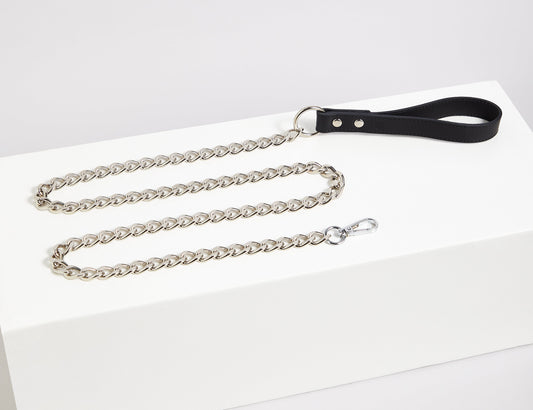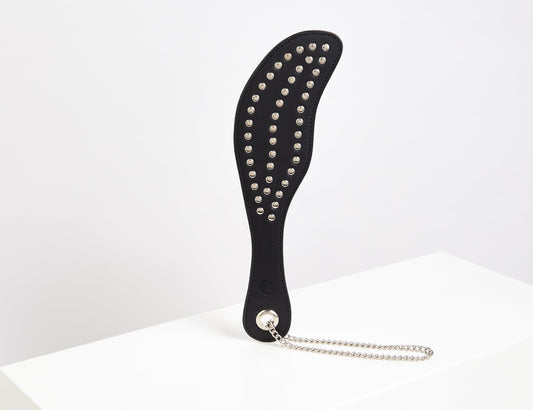Bondage: a word most of us know, but many don’t fully understand. Part sensual experimentation, part power-play, this falls under the “B” in the umbrella term, BDSM. You may have heard of handcuffs and ropes. You might have seen ‘How to Build a Sex Room’… Yet there is so much more to bondage and BDSM than the media often presents.
Bondage, put simply, involves consensually being restrained or restraining another person. It involves elements of control, power and all of the thrill of using pleasure and pain within sex… And studies show that more than one in five people enjoy partaking in it too.
Whether you’re simply curious about the topic or you’re looking to start experimenting with bondage yourself and you’re wondering how to do it safely, this guide has got you covered.
What is bondage?
To delve further into the concept, we have to start by understanding exactly; what is bondage?
Bondage is a form of sex play that involves tying, restraining or binding, it incorporates many different principles.
First and foremost, it’s a surrender of power or an assumption of power. We all recognise the role that power plays in any type of sex from the dynamic involved in initiation through to who takes control in a particular position. Bondage is a way to play around with this dynamic and to amplify a loss or gaining of control, something that many find particularly exciting.
Through this deprivation of movement, often combined with elements of pleasure and pain and a role play of “discipline,” an individual's senses become heightened. They may find that they are more aroused and that specific touches and sex acts feel better.
Many people think of bondage as classic power play, with one person in a partnership always acting as dominant and the other as submissive. However, it is actually more helpful to think of it as part of an experimentation with power, a range of sex acts in which people try out different roles in order to achieve mutual pleasure. It’s also important to note that self-bondage is also popular during solo masturbation.
What is BDSM?
While understanding exactly what bondage is, it helps to understand it in the broader spectrum of BDSM. An acronym that stands for bondage and discipline, dominance and submission, and sadism and masochism, this is another term that is often misrepresented.
For example, sadism and masochism, or S&M, is often thought of as an extreme form of kink. In reality, it is something that many enjoy whether in light spanking or gentle choking.
There are dozens of variations of bondage sex, just as there are hundreds of ways to explore the other principles involved in BDSM. The only important thing is simply to know how to perform BDSM safely.
How to perform bondage safely:
There are a few key steps to have in place in order to have safe bondage sex.
Consent, consent, consent
It goes without saying that consent is the most important consideration when practicing bondage, just as in any other sex act.
Before experimenting, have a conversation with your partner (or partners) about ground rules and boundaries. This lets you know which things are off limits and also gives you ideas about ways to make the experience even better.
It’s important never to rely on implied consent because body language cues can be misleading; with a continuous conversation about consent before and during sex, you’ll be able to engage in healthy and safe bondage sex.
Safety first
Part of ensuring consent throughout bondage sex is finding a safe word. This shouldn’t be something like “no,” which can be misconstrued as part of a power play. Instead pick something completely random, like “banana” or “pickles.” Have fun with this.
The traffic light system is also popular within the kink community. Within this, you say “red” when you want your partner to stop what they’re doing immediately, “yellow” when you’d like them to slow down and “green” when everything is all good. Be sure to pay attention to what you’re enjoying and how you’re feeling and to communicate this consistently. This will only lead to better, more fulfilling sex for all parties!
Learn from the right content
Whilst porn and mainstream media (cough, cough 50 Shades of Grey) tend to misrepresent bondage sex, there are a lot of materials out there that you can learn from. We recommend The New Bottoming and Kinkly as an online resource.
While exploring educational resources, discuss with your partner which acts they like the look of and which they don’t. Ask whether they’d enjoy being submissive or dominant and look for entry level activities that you might both enjoy experimenting with.
Understand your equipment
Another crucial element of bondage sex safety is making sure you understand how to use your equipment. If you’re playing with ropes, for example, make sure you use knots that are easy to untie and keep a pair of safety shears nearby. If you’re using restraints, start by restraining in easy positions such as holding the wrists behind the back. Soft cuffs, such as the Kilter Classic Cuffs, provide a restraint tool that is equal parts comfortable and sexy.
Practice makes perfect
Bondage sex, like any new experience, can be overwhelming. If you are not already within an existing sexual dynamic, experiment with somebody you know already.
Dating apps are not always the best place to find a partner for BDSM as trust, alongside a mutual understanding of boundaries, is key to enjoying the experience safely. Though if you wanted to explore more open-minded platforms, we'd suggest looking towards Feeld or Fetish.com.
Using a previous sexual partner allows you to try out things beforehand without feeling pressured or embarrassed; it’s always a good idea to spend some time practicing certain positions before doing them in the heat of the moment. Find someone you can have fun doing this with, and don’t take it too seriously! We’re not supposed to feel like pornstars when we have bondage sex… we’re supposed to have fun.
Be sure to partake in aftercare too, in which you check in with your partner and assess how they’re feeling. Hugs and cups of tea will never go amiss either.
The benefits of bondage:
In case you wanted a few more reasons to experiment with bondage sex, here are some of the main associated benefits…
Improved mental health:
The beneficial impact of bondage on mental health has been explored fairly extensively. One 2016 study notes that engaging in BDSM can reduce anxiety; another piece of research explores the link between consensual BDSM and lower sensitivity to rejection. No matter what the scientific evidence, it’s also undeniably stress-relieving for many people as all good sex is.
Connection-building:
In allowing couples to explore their fantasies together in an environment that is based on trust, bondage sex can build closeness. Surrendering control also allows for the expression of vulnerability whilst assuming it builds communication skills. Sex therapists such as Dr. Stephanie Jones, introduce BDSM practices such as bondage to couples struggling with their sex lives or relational issues; she notes the way it can balance out power struggles in day to day life.
Promotion of flow:
Bondage sex has been linked to a state of psychological flow known as transient hypofrontality. In this state, time seems to slow down, the body relaxes and the mind is able to completely focus on the present moment. This state can even continue after the sexual experience is over.
A guide to bondage equipment:
To get started, there are a few different types of restraint-based equipment you can play with during bondage sex.
Rope:
Rope is often seen in porn and can be fun when used safely. However, it does require a higher level of experience as tying and untying knots can be time-consuming and the experience can be a little more intense. We'd recommend always taking a class and learning from an expert when it comes to trying rope.
Bondage tape:
Bondage tape is an easy option, being quick to stick on but equally quick to peel off. It does stick to itself rather than the skin, but many do still find it less comfortable than other forms of restraint equipment.
Handcuffs:
Handcuffs are one of the most popular forms of restraint equipment and they can be made out of a range of materials. Metal handcuffs can add a touch of pain that some will enjoy, but the safest option for beginners is a pair of leather cuffs. Kilter’s Classic Cuffs are made from a premium Italian leather with a padded suede lining for a sensual yet exciting restraint experience. To find out more about our products, click the link.
Armed with all you need to know, and a few tantalising products, you’re now ready to set off into a journey of sensual exploration with safe bondage sex.
Follow our page for more insights on the wonderful world of kink.










